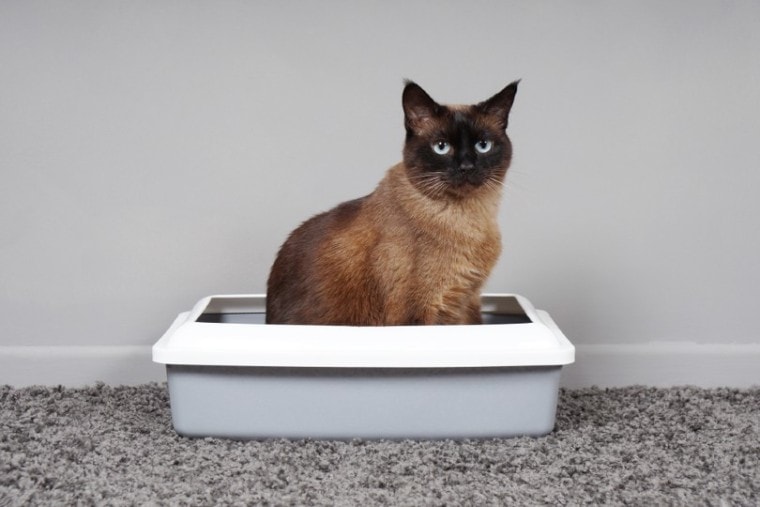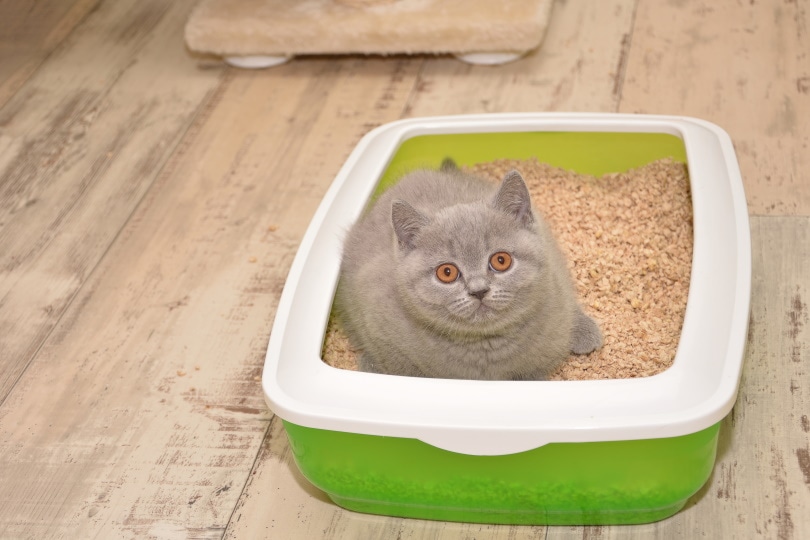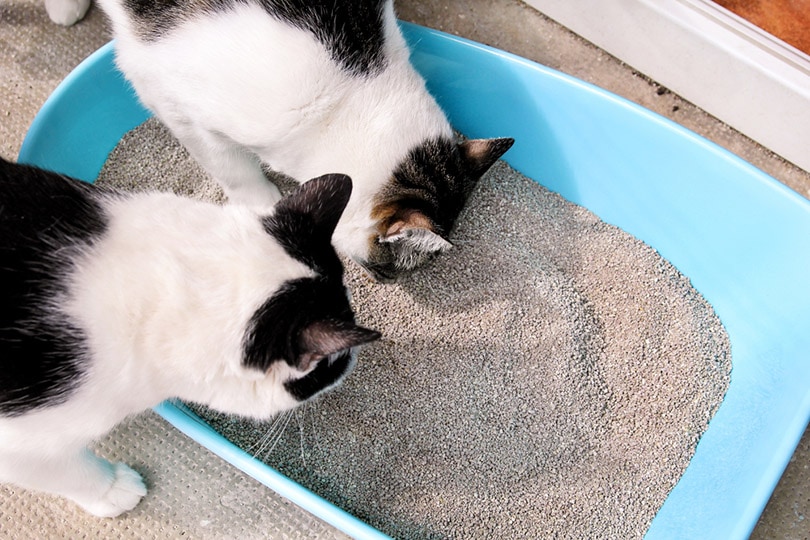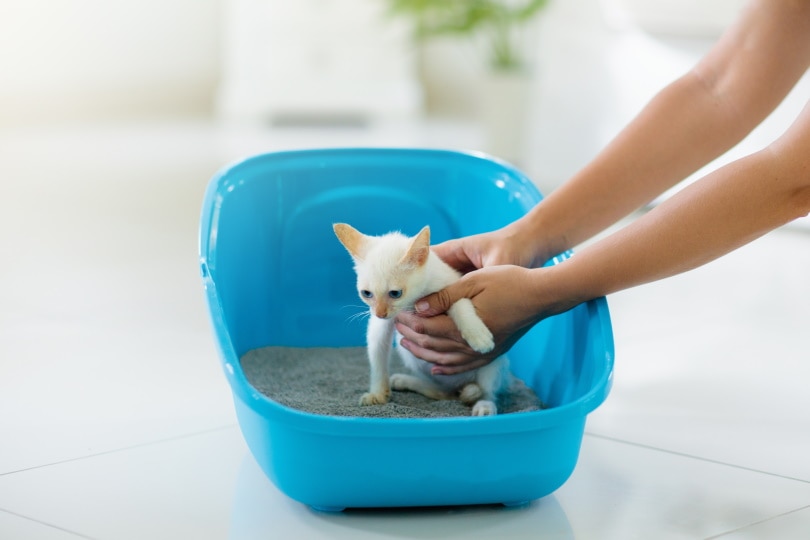
Whether you took in a formerly feral rescue, a stray cat adopted you, or you’re moving from the country to a city, you may need to train an outdoor cat to use a litter box. For some cats, the transition to the litter box will be instinctive and simple, but others may need more finesse to learn.
Find out how to train an outdoor cat to use a litter box and what you can do to make the process as quick and painless as possible.
The 7 Tips for Training an Outdoor Cat to Use a Litter Box
1. Getting Started
How you present the litter box is one of the most important parts of litter box training. A formerly outdoor cat had its choice of elimination spots, all as open or secluded as it wanted. The best option for training your cat is to give it as close to a “natural” litter box scenario as you can.
Start with an uncovered, simple litter box. A covered litter box or a fancy self-cleaning model may be too intimidating for your feral friend. Make sure the box is large enough for your cat to stand and move around without being cramped.
If you have more than one cat, make sure you have one litter box per cat. If you’re transitioning a new outdoor cat to the indoors, you may want to add a few extra litter boxes in different areas. An outdoor cat can go wherever it feels most comfortable, and providing multiple litter boxes satisfies this.

2. Choosing Cat Litter
Litter is a strange sensation for an outdoor cat that’s only ever experienced soil, grass, sand, and other natural substrates. You should mimic these natural substrates as much as possible with soft, sandy, unscented litter. If your cat is still reluctant, you may need to mix the litter with natural sand or soil, slowly reducing the soil until only litter remains.
If you’re not sure which your cat prefers, offer a few different types of litter in different litter boxes. Try to keep the conditions as close as possible, however, so that you know it’s the litter and not the box or the location that’s prompting your cat to choose one over the other.
3. Introducing the Litter Box
Once you have your setup complete, show the cat the litter box. Some cats will instinctively know that this is the new bathroom, while others need some time and guidance. You can pick up your cat and place it in the litter. If your cat jumps out, don’t force it back into the litter box. Give it some time to get used to the texture.
When your cat goes in the box, offer a treat as encouragement. If your cat uses the litter box, wait until it’s done and then offer a treat. Be sure to praise the cat to show that the behavior is acceptable.

4. Breaking Bad Habits
If your cat insists on eliminating in the house, you can redirect this behavior to the litter box. For example, if your cat poops near the box, pick it up and bring it to the box. Your cat will learn to associate its waste with the litter box. If your cat pees, use an enzymatic cleaner to remove the smells from the area.
Also, if you notice your cat tends to have accidents in the same place, there may be a reason. You may have the litter box in an area that’s too noisy, too dark, too cold, too exposed, etc. You can try moving the litter box to the area of the accident to see if the cat will try to use that next time.
5. Confine the Cat to a Room
Some cats may take a while to learn the litter box. If you’re concerned about your home, you can confine your cat to a smaller space, like a large extra room or basement, placing the litter boxes inside as well. Once the litter box training is complete, you can offer the rest of your home to your cat with confidence.

6. Clean the Litter Box Consistently
Whether indoor or outdoor, most cats won’t use a dirty litter box. While training, it’s vital to keep the litter box as clean and appealing as possible, so clean the litter box each day or every other day.
The litter should be changed at a minimum once a month (if not more frequently), no matter how often you spot-scoop the litter box. Over time, the litter will absorb odors that will be off-putting to your cat, leading it to find other elimination spots.
Even if you keep a clean and tidy litterbox, you probably still find yourself with cat odors and stains around the house – but with the Hepper Advanced Bio-Enzyme Pet Stain & Odor Eliminator Spray, you can permanently remove even the very worst pet stains and smells! Click here to learn more and get yourself a bottle.
- ADVANCED ENZYMATIC CLEANER - Penetrates the most stubborn smells and stains at the deepest molecular...
- FOR ANY MESS, ON ANY SURFACE - This pet odor eliminator cleans your carpets, floors, furniture,...
- FRESH, NATURAL ODOR - Our unique formulation doesn't rely on dangerous or unpleasant chemical...
At Pet Keen, we’ve admired Hepper for many years, and decided to take a controlling ownership interest so that we could benefit from the outstanding products of this cool cat company!
7. Remember to Be Patient
We’re spoiled with how quickly most cats take to the litter box, so it can be frustrating if your outdoor cat isn’t learning. But remember that your cat spent months or years outside, eliminating wherever it suited, and the litter box is a strange experience.
Show patience with your cat’s learning process. No matter what, don’t punish your cat for accidents. If you do, you may create a fear associated with the litter box and it will take even longer for your cat to learn. Instead, try different approaches, different litter, or different methods until your cat gets the hang of it.

What to Do if Nothing Works
If you’ve tried everything and your cat still isn’t using the litter box, there may be a medical reason. Cats with urinary tract infections are notorious for seeking soft areas to pee. Cats also search for their owners when they’re sick, uncomfortable, or in pain, and that may lead to inappropriate peeing and pooping in areas near you.
Take your cat to the vet to see if there’s an underlying medical condition. If possible, bring a urine or fecal sample to have it tested.
A Note About Kittens

Young kittens may struggle to get into a litter box, making the training process even more challenging. If you can, provide a smaller litter box with low edges or a plastic bin that’s easier for your kitten to access.
If that doesn’t work, provide several sheets of newspaper for your kitten. Be sure to keep it in the same spot and throw away the paper as soon as it’s soiled. Over time, your kitten will learn that that’s the “elimination spot”, and will adjust better to the litter box when it’s big enough.
Conclusion
Though it takes time, most outdoor cats adjust to the indoors, including using the litter box appropriately. You may need to experiment with a few methods, but it will be worth the effort to have a well-adjusted, litterbox-trained house cat.
- Another interesting read: Why Does My Cat Use the Litter Box When I Use the Toilet?
Featured Image Credit: Axel Bueckert, Shutterstock







